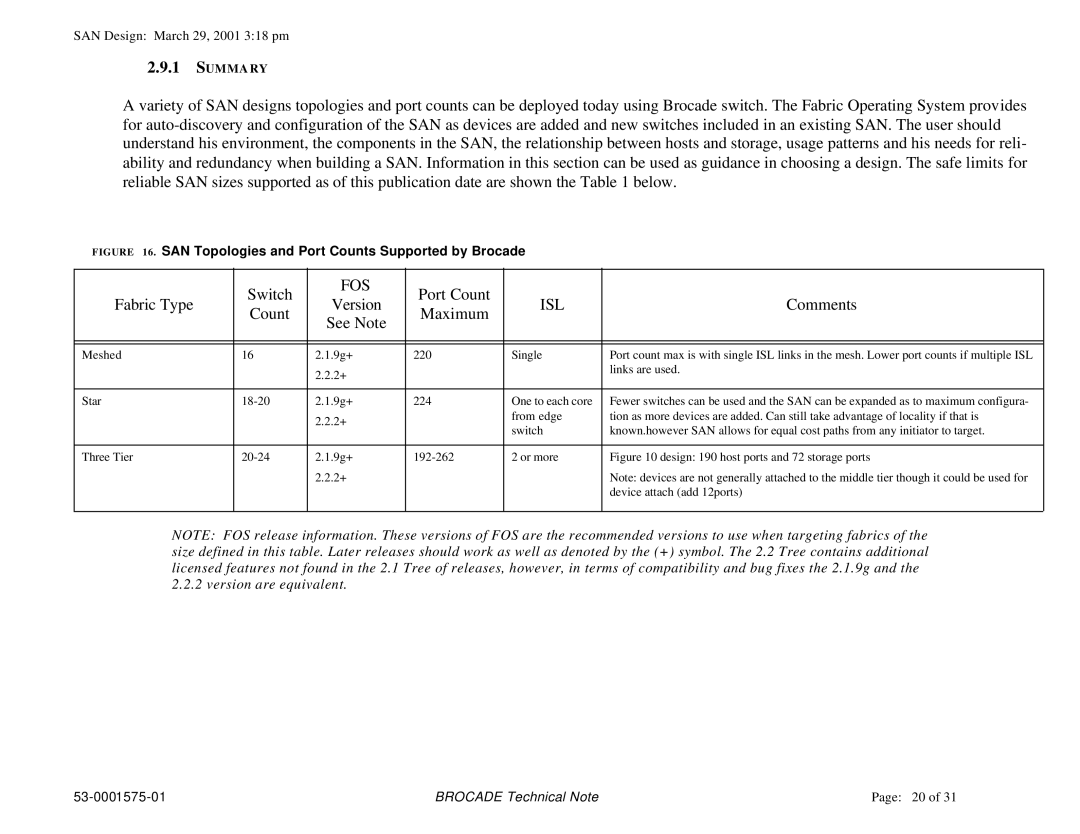SAN Design: March 29, 2001 3:18 pm
2.9.1SUMMA RY
A variety of SAN designs topologies and port counts can be deployed today using Brocade switch. The Fabric Operating System provides for
FIGURE 16. SAN Topologies and Port Counts Supported by Brocade
| Switch | FOS | Port Count |
|
| |
Fabric Type | Version | ISL | Comments | |||
Count | Maximum | |||||
| See Note |
|
| |||
|
|
|
|
| ||
|
|
|
|
|
| |
|
|
|
|
|
| |
Meshed | 16 | 2.1.9g+ | 220 | Single | Port count max is with single ISL links in the mesh. Lower port counts if multiple ISL | |
|
| 2.2.2+ |
|
| links are used. | |
|
|
|
|
| ||
|
|
|
|
|
| |
Star | 2.1.9g+ | 224 | One to each core | Fewer switches can be used and the SAN can be expanded as to maximum configura- | ||
|
| 2.2.2+ |
| from edge | tion as more devices are added. Can still take advantage of locality if that is | |
|
|
| switch | known.however SAN allows for equal cost paths from any initiator to target. | ||
|
|
|
| |||
|
|
|
|
|
| |
Three Tier | 2.1.9g+ | 2 or more | Figure 10 design: 190 host ports and 72 storage ports | |||
|
| 2.2.2+ |
|
| Note: devices are not generally attached to the middle tier though it could be used for | |
|
|
|
|
| device attach (add 12ports) | |
|
|
|
|
|
|
NOTE: FOS release information. These versions of FOS are the recommended versions to use when targeting fabrics of the size defined in this table. Later releases should work as well as denoted by the (+) symbol. The 2.2 Tree contains additional licensed features not found in the 2.1 Tree of releases, however, in terms of compatibility and bug fixes the 2.1.9g and the 2.2.2 version are equivalent.
BROCADE Technical Note | Page: 20 of 31 |
